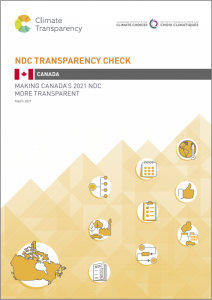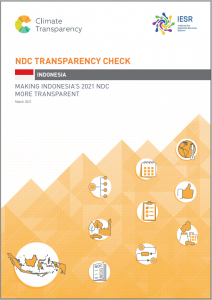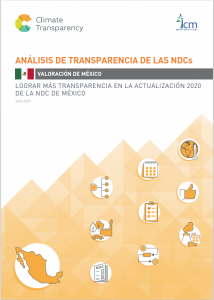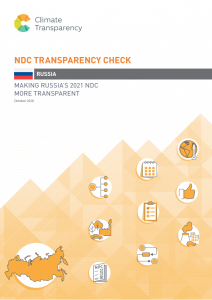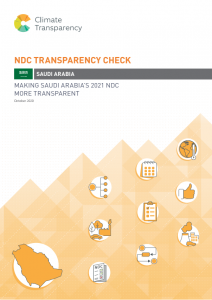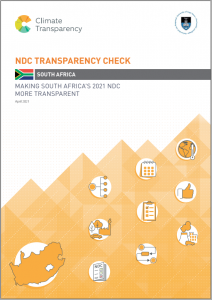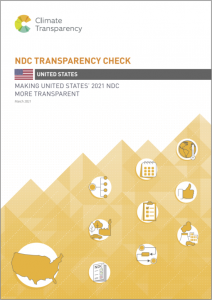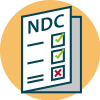
In the Paris Agreement, the world’s governments acquired the obligation to present, by the Conference of the Parties to be held in November 2021 (COP 26), an updated version of their “Nationally Determined Contributions” (NDCs). NDCs contain countries’ mitigation targets as contributions to achieving Paris Agreement’s long-term temperature goal of staying within a 1.5 degree temperature limit, and in many instances also contain information on adaptation efforts.
The objective of the NDC Transparency Check is to provide a robust reference to assess whether the mitigation efforts communicated by countries through Nationally Determined Contribution (NDCs) are clear, transparent and understandable, in terms of the requirements set out in the Paris Agreement, its accompanying decision (1/CP.21) and Annex I to decision 4/CMA.1, which sets out the “information to facilitate clarity, transparency and understanding of nationally determined contributions” to accompany NDCs. Legally, the Annex is only binding from the second NDC onwards. However, Parties are “strongly encouraged” to apply the Annex to updated NDCs.
Does the NDC contains a clear link to the temperature goal? Does it include information on expected peaking year and grounds for the NDC target being consistent with “rapid reductions thereafter”? Are methodological assumptions clear?
While the approach taken for this assessment is based on conformance with the Annex, this ‘NDC Transparency Check’ aims to assess both:
i. Conformance of a country’s NDC with the Katowice Rule Book, and
ii. The extent to which a country has provided additional information in relation to each element of the Annex which enhances clarity, transparency and understanding.
The Check assesses whether an NDC provides sufficient information to understand the country’s goals and the links to the Paris Agreement’s global goal; the desired collective mitigation outcomes of all countries.
In 2020, country partners of Climate Transparency from G20 countries developed recommendations on how to enhance the transparency of the upcoming NDC updates. These were communicated to their governments, offering a credible reference point and a platform for mutual exchange and learning.
In 2021, Climate Transparency plans to apply the NDC Transparency Check to the updated NDCs of G20 countries, to identify improvements, and further possibilities to improve the information contained in future updates of NDCs.
In collaboration with the country partners of Climate Transparency, this independent, evidence-based assessment has contributed to understanding the institutional and public policy arrangements needed to strengthen transparency and accountability in the climate policy framework of the G20 countries. By doing that, the partnership aims also at contributing to civil society efforts to provide an independent review to the Global Stocktake of the UNFCCC, which will be done for the first time in 2023.
The tool is applicable to all NDCs, it is not limited to G20 countries.
If you are interested to know more and/or need the template to apply the tool, please contact the international secretariat of Climate Transparency: Sebastian Wegner (swegner@governance-platform.org)
NDC Transparency Check provides a robust reference to assess whether the mitigation efforts communicated by countries through Nationally Determined Contribution (NDCs) are clear, transparent and understandable, in terms of the requirements set out in the Paris Agreement, its accompanying decision (1/CP.21) and Annex I to decision 4/CMA.1, which sets out the “information to facilitate clarity, transparency and understanding of nationally determined contributions” to accompany NDCs. Legally, the Annex is only binding from the second NDC onwards. However, Parties are “strongly encouraged” to apply the Annex to updated NDCs.
The methodology was developed by Andrew Marquard and Harald Winkler (University of Cape Town) and benefited by the review of Climate Transparency partners.
Click on the picture to download the document.
More assessments will be available in the coming weeks. If you would like to stay informed, please send an email to info@climate-transparency.org




